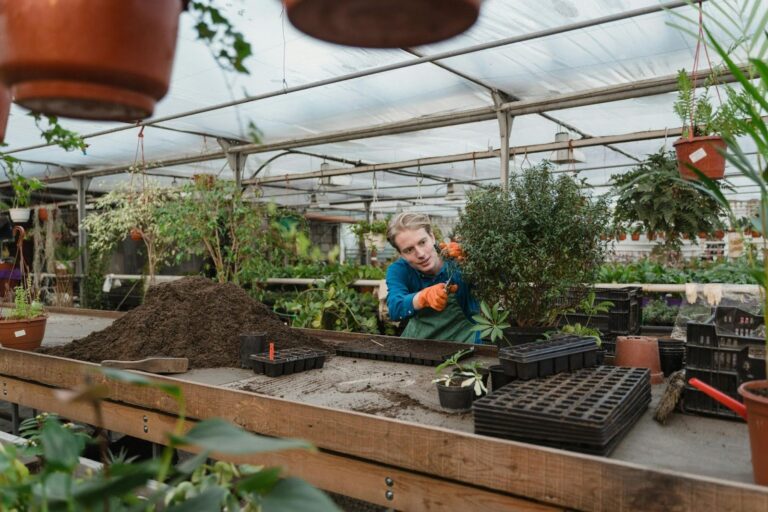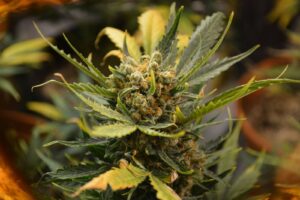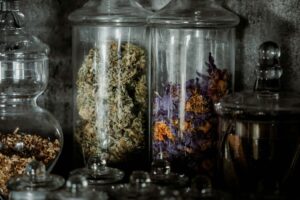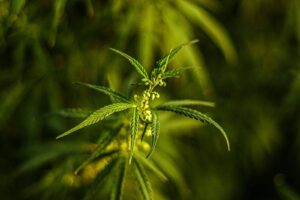Nothing ruins a good cannabis harvest faster than mold. You put in weeks of effort growing healthy plants only to see fuzzy white patches or smell that unmistakable musty odor creeping into your curing buds. Mold can spread fast, affecting quality and potency and, in some cases, making your buds completely unusable. Early detection, quick action, and proper prevention are the keys to saving your harvest.
Mold is more than just an inconvenience. It can compromise the safety of your product. Inhaling moldy cannabis can lead to respiratory issues and other health concerns. That is why understanding how to prevent and eliminate mold during curing is essential for preserving both quality and safety.
This blog covers how to identify mold on curing buds, the conditions that cause it, and ways to prevent it. It also discusses immediate actions to minimize damage, water curing as a last resort, and tips for maintaining optimal conditions during drying and curing.
How to Recognize Mold on Curing Cannabis Buds
After weeks of careful cultivation, the curing process is your final step to achieving top-quality cannabis. However, mold can creep in and ruin your hard work if moisture levels get too high or airflow is restricted. That’s why it’s crucial to know exactly what to look for. Catching mold early can save the rest of your harvest and help you refine your curing techniques for future growth.
Here’s how to spot mold on curing buds before it spreads.
What Mold Looks Like on Curing Buds
1. White, Gray, or Blue Fuzz
If you see fuzzy patches forming on your buds, especially in tight crevices or deep within dense nugs, it’s a clear sign of mold. This fuzz can be white, gray, or even blue, often caused by Botrytis (bud rot) or powdery mildew. Unlike healthy trichomes, which appear crystalline and sticky, mold has a soft, cotton-like, or powdery texture.
2. Dark Spots or Discoloration
Mold often appears as irregular brown, black, gray, or even yellow patches. These spots may look wet, slimy, or slightly sunken. If you notice any areas that don’t match the natural colors of your strain—such as green, purple, or orange—it’s worth taking a closer look.
3. Slimy or Web-Like Growth
Certain molds produce a slimy film or a stringy, web-like structure that can wrap around buds. If you see anything resembling cobwebs or sticky strands, mold could take hold. This type of growth thrives in overly humid conditions, indicating that your buds might be too moist.
4. Buds That Crumble or Feel Too Wet
Moldy buds can feel excessively damp, spongy, or even slightly slimy. If your buds don’t bounce back when gently squeezed, they could retain too much moisture. On the other hand, mold can also dry buds out too much, causing them to crumble into dust when handled. Either extreme is a warning sign.
5. White Powder or Dust on Buds
A fine white or gray powder on the surface of your buds may indicate powdery mildew. Unlike trichomes, which sparkle and feel sticky, mildew has a dull, dusty appearance and can be wiped away.
6. Unusual Residue on Fingers
Healthy buds should feel sticky due to their resin content, but if they leave behind a chalky, slimy, or overly dry residue when handled, mold could be present.
How Mold Smells on Curing Cannabis
Your nose is one of your best tools for detecting mold before it becomes visible. While properly curing cannabis has a rich, earthy, or fruity aroma, moldy buds will have an unpleasant, off-putting smell.
1. Musty or Mildew-Like Odor
A stale, damp, or musty smell—similar to an old basement, damp laundry, or musty cardboard—is a clear sign of mold growth. If your curing jars have this odor when opened, inspect the buds carefully.
2. Ammonia or Rotting Odors
If your buds give off a strong ammonia-like scent or anything resembling rotting vegetation, bacteria and mold could break down the cannabinoids and terpenes. This often happens when buds are stored in airtight conditions with excessive moisture.
3. Sour or Fermented Aroma
Some moldy cannabis can develop a sour, yeasty, or vinegar-like smell. This is often caused by anaerobic bacteria thriving due to poor ventilation during curing. If your buds smell more like spoiled fruit than fresh cannabis, mold could be the culprit.
So, what are the causes of mold in curing cannabis buds, and how do you prevent it?
Causes of Mold in Curing Cannabis Buds (And How to Prevent It)
You’ve spent months growing your cannabis plants, only to find mold creeping in during the curing process. To keep your harvest fresh and potent, you need to understand what causes mold in curing cannabis and how to prevent it.
1. Too Much Moisture in the Buds
If your buds are too wet when you start curing, they create the perfect breeding ground for mold. Even after drying, excess moisture trapped inside the buds can lead to mold growth in jars or storage bags.
How To Fix It: Ensure your buds are properly dried before curing. Typically, they should have around 10-12% moisture content. If they feel damp in jars, burp them more frequently.
2. Poor Airflow in Jars or Containers
Sealing your buds too soon or forgetting to “burp” them allows moisture to build up inside, creating a stagnant, humid environment where mold thrives.
How To Fix It: For the first week of curing, open your jars at least once or twice daily to release excess humidity. Use humidity packs (like Boveda 62%) to maintain an optimal curing environment.
3. High Humidity Levels
Storing your buds in a humid room makes it difficult to control moisture levels. External humidity can introduce unwanted moisture even if your buds were dried correctly.
How To Fix It: Keep the room’s humidity between 55% and 62%. If you live in a humid climate, use a dehumidifier or air conditioner to regulate moisture levels.
4. Temperature Fluctuations
Too much heat speeds up moisture evaporation, while cold temperatures can cause condensation inside jars. Both can encourage mold growth.
How To Fix It: Store your curing jars in a cool, dark place at around 60-70°F (15-21°C). Avoid direct sunlight, as heat can trigger humidity spikes.
5. Contaminated Equipment
If your curing jars, drying racks, or storage containers aren’t clean, mold spores might already be present before you even start curing.
How To Fix It: Always sterilize jars and storage containers before use. Wipe them down with alcohol or hot water and let them dry completely before adding buds.
6. Overpacking Jars or Containers
Stuffing too many buds into a single jar restricts airflow and creates pockets of trapped moisture, increasing the risk of mold.
How To Fix It: Fill jars only about ¾ full to allow air circulation. Shake them gently during burping to redistribute buds and prevent uneven moisture buildup.
7. Using Plastic Bags Instead of Glass Jars
Plastic bags can trap excess moisture and lack the airtight seal needed for proper curing. Some plastics may also release chemicals that affect the bud’s quality.
How To Fix It: Always use glass jars with airtight lids for curing. If using large containers, make sure they’re food-safe and moisture-resistant.
8. Improper Handling with Dirty Hands or Tools
Mold spores can transfer from your hands or tools onto the buds during handling. Even a small contamination can spread in a sealed jar.
How To Fix It: Wash your hands thoroughly before handling buds, and use clean, sanitized scissors or tweezers when needed.
9. Leaving Buds in a Damp Environment Before Curing
If you let freshly dried buds sit in a humid space before jarring them, they can absorb moisture from the air, leading to mold growth once sealed.
How To Fix It: Move dried buds directly into a controlled curing environment without unnecessary exposure to fluctuating humidity.
10. Not Checking Jars After the First Few Weeks
Mold can develop even after the initial curing phase, especially if humidity levels change due to environmental factors.
How To Fix It: Even after the first few weeks, check your jars occasionally. If buds feel damp or smell musty, they may need more airflow or humidity adjustment. Tracking these factors helps refine your curing process. PlanaCan generates detailed harvest reports, capturing data on cultivation decisions and yield. With all information in one place, you can analyze trends, improve methods, and boost profitability.
Now, let us discuss some immediate actions that you can take if you detect mold in your cannabis plants to prevent it from spreading and impacting your plants.
Immediate Actions Upon Detecting Mold in Your Cannabis Grow
Mold in your grow space is a serious threat to your plants and overall yield. If you spot it, you must act fast to prevent contamination and crop loss. Here’s what you should do immediately:
- Isolate the Affected Area: Mold spreads quickly, so separate the infected plants from the rest of your grow. Move them to a quarantine area to prevent spores from contaminating healthy plants if possible.
- Protect Yourself: Wear gloves, an N95 mask, and protective eyewear. Mold spores can cause respiratory issues and allergic reactions, especially in enclosed grow spaces.
- Identify the Type of Mold: Common cannabis molds include:
- Powdery mildew: White, powdery patches on leaves and buds.
- Bud rot (Botrytis): Grayish, mushy rot starting inside dense buds.
- Root rot: Brown, slimy roots due to overwatering and poor drainage.
- Remove Infected Plant Material: Carefully cut away and discard moldy leaves, buds, or stems. Seal the waste in a plastic bag and remove it from your grow space immediately. Never compost moldy plant material.
- Improve Air Circulation: Mold thrives in stagnant air. Increase airflow with oscillating fans, inline exhaust systems, and well-placed intake vents. Make sure air is moving evenly across the entire canopy.
- Reduce Humidity & Adjust Temperature: Mold thrives in high humidity and fluctuating temperatures. Keep conditions stable:
- Vegetative stage: 40–60% RH
- Flowering stage: 40–50% RH (even lower in late bloom)
- Keep daytime temps between 75–80°F, and avoid drastic drops at night.
- Optimize Lighting & UV Exposure: Mold often develops in shaded areas with poor light penetration. Ensure even light distribution across your plants. Some growers use UV-C lights to kill mold spores, but use them cautiously to avoid harming your plants.
- Space Plants Properly & Prune Strategically: Overcrowded plants create microclimates that trap humidity. Maintain adequate spacing and prune lower and inner leaves to increase airflow. Light defoliation in late veg and early flower can help prevent mold buildup.
- Sanitize Your Grow Space & Equipment: Mold spores linger, so clean surfaces, tools, and containers with hydrogen peroxide, alcohol, or a mild bleach solution. Regularly clean carbon filters, fans, ducting, and grow tents to prevent contamination.
- Use Natural or Organic Mold Treatments: For minor mold issues, apply organic solutions like:
- Potassium bicarbonate spray (to combat powdery mildew)
- Neem oil (prevention in early veg; avoid in flower)
- Beneficial bacteria & fungi like Trichoderma and Bacillus subtilis to suppress mold growth.
- Choose Mold-Resistant Strains: Certain strains, especially sativa-dominant varieties, are more resistant to mold. If mold is a recurring issue, switch to strains known for their resilience in humid conditions.
- Rotate & Replace Growing Media: Mold spores can linger in soil, coco, or hydro setups. If using soil, sterilize or replace it between grows. For hydro, thoroughly disinfect your system to eliminate spores.
- Monitor & Prevent Future Outbreaks:
- Inspect plants daily for signs of mold.Keep good airflow and ventilation at all times.
- Maintain stable humidity and temperature levels.
- Regularly clean and sanitize all equipment.
PlanaCan helps you track these factors by generating detailed harvest reports, capturing data on cultivation decisions and their impact on yield. With all information in one place, you can analyze trends, refine your methods, and improve profitability over time.
Now, let us understand how water curing helps correct mold in your cannabis plant.
How to Remove Molds From Buds Through Water Curing
Finding mold on your cannabis is frustrating, but before you throw your buds away, you might consider water curing. This method can help remove mold spores and impurities while producing a smoother smoke. However, it will not eliminate all toxins, so it is not a foolproof solution. If your buds have extensive mold growth, it is best to discard them.
How Water Curing Works
Water curing involves submerging cannabis in water for several days. Since THC and CBD are not water-soluble, they remain intact while unwanted compounds, including some mold spores, leach out. This process also strips away terpenes, meaning your buds may lose some aroma and flavor but gain a cleaner, milder smoke.
Step-by-Step Guide to Water Curing Moldy Buds
- Check the Severity of Mold: If your buds have fuzzy mold growth, a strong musty odor, or deep discoloration, they are unsafe to use. Water curing is only an option for minor surface mold.
- Sanitize Your Equipment: Clean your jar or container thoroughly to prevent bacteria buildup during the curing process.
- Trim the Buds: Remove excess stems and leaves to maximize water exposure.
- Submerge in Water: Place the buds in a clean glass jar filled with distilled or filtered water. Tap water may contain chemicals like chlorine that could affect the process.
- Change Water Daily: Replace the water every 12 to 24 hours for five to seven days. Keep the jar in a cool, dark place. You can add activated charcoal to help absorb impurities.
- Monitor for Signs of Contamination: If the water gets slimy or your buds smell off, toss them immediately. These issues can point to problems in your process. PlanaCan helps you track every cultivation decision with detailed harvest reports to spot trends, refine your methods, and improve yields over time. Learning from past results makes it easier to avoid mistakes and grow more successfully.
- Dry the Buds Properly: After curing, dry the buds thoroughly in a dark, ventilated space. A food dehydrator on a low setting can speed up drying, but be careful not to overheat and degrade cannabinoids.
Important Safety Considerations
- Use a Microscope for Inspection: A jeweler’s loupe or microscope can help you check for any remaining mold spores before consumption.
- Test a Small Batch First: If you are unsure about the results, try water curing a small amount before treating an entire batch.
- Consider Alternative Uses: If you do not feel comfortable smoking water-cured buds, consider making edibles or tinctures, as heat may help neutralize some contaminants.
- Watch for Reactions: Even if mold appears to be gone, some individuals may still experience respiratory irritation or allergic reactions. If you notice any adverse effects, stop use immediately.
- Store Cannabis Properly: Mold thrives in high humidity. Always store your buds in airtight containers with humidity packs (55 to 62 percent) to prevent future mold issues.
So, how do you carry out the drying and curing process for your cannabis plants to preserve the quality of your cannabis yield? Let us understand in detail.
Handling the Cannabis Drying and Curing Process
Proper drying and curing are essential for preserving the potency, flavor, and overall quality of your harvest. Rushing these steps can lead to harsh smoke, terpene loss, or mold growth, ultimately reducing the value of your product. Here’s how to do it right.
Step 1: Drying Your Cannabis Properly
Drying removes excess moisture, preventing mold while preserving terpenes and cannabinoids.
- Trim Before or After Drying: You can trim your buds before hanging (wet trimming) or after drying (dry trimming). Wet trimming speeds up drying, while dry trimming retains more terpenes.
- Hang or Rack Your Buds: Hang whole branches upside down or place smaller buds on drying racks in a controlled environment. Avoid overcrowding to ensure even airflow and prevent mold.
- Maintain Ideal Conditions: Keep the room at 60-70°F (15-21°C) with 50-60% humidity. Too hot, and terpenes burn off. Too humid, and mold creeps in. Monitor humidity closely—if it rises above 60%, use a dehumidifier; if it drops below 50%, introduce a humidifier.
- Airflow and Darkness Matter: Gentle air circulation prevents stale air, but avoid direct fans on buds. Darkness helps preserve cannabinoids and terpenes.
- Test for Readiness: In 7-14 days, check if stems snap rather than bend. That’s your cue the buds are dry enough for curing.
Step 2: The Curing Process
Curing refines the buds, improving flavor, smoothness, and potency.
- Jar Your Buds: Place dried buds in airtight glass jars, filling them about ¾ full to allow air circulation. Place a small digital hygrometer inside each jar to monitor humidity levels.
- Burp Daily (First Two Weeks): Open the jars for 10-15 minutes daily to release moisture and let in fresh air. Keep jars in a 60-65% humidity, 60-70°F environment. After two weeks, gradually reduce burping frequency to every few days.
- Monitor & Adjust: If buds feel too dry, add humidity packs. If they smell like ammonia, they need more burping. Over time, tracking these adjustments helps you perfect your curing process. PlanaCan makes this easier by generating detailed harvest reports and organizing all your cultivation data in one place. Reviewing past results allows you to spot trends, refine your methods, and improve yields with every harvest.
- Cure for at Least 2-4 Weeks: While buds can be smokable after two weeks, curing for a month or longer enhances aroma, smoothness, and potency. Some strains benefit from extended curing (up to 6 months) for a richer terpene profile.
Step 3: Proper Storage for Long-Term Freshness
Once curing is complete, proper storage ensures your buds remain potent and flavorful.
- Use Airtight Glass Containers: Plastic bags or containers can leach chemicals and degrade your cannabis. Stick with glass jars.
- Store in a Cool, Dark Place: Light and heat degrade THC into CBN, reducing potency. Keep jars in a cool, dark place.
- Vacuum-Seal for Long-Term Storage: If storing for months, vacuum-sealing (with proper humidity control) helps maintain freshness.
Conclusion
Mold can destroy a harvest if left unchecked, but early detection and quick action can save your buds. Maintaining proper humidity, airflow, and cleanliness prevents mold from taking hold in the first place. Curing is just as important as growing, and ongoing monitoring is the best way to ensure your buds stay fresh, potent, and mold-free.
Managing a cannabis grow operation comes with its challenges, and staying on top of every detail is crucial. This is where PlanaCan can help. You can define and streamline cultivation processes using customizable templates, ensuring every step, from planting to harvest, is organized for maximum efficiency.
It also provides a clear visual timeline, allowing you to plan months ahead while also managing day-to-day tasks. With centralized scheduling, adjustments can be made easily, ensuring nothing is overlooked and helping you maintain a healthy, high-yield crop.
Take control of your cultivation process and prevent avoidable setbacks like mold. Schedule a free call today to see how PlanaCan can help optimize your cannabis operation.




